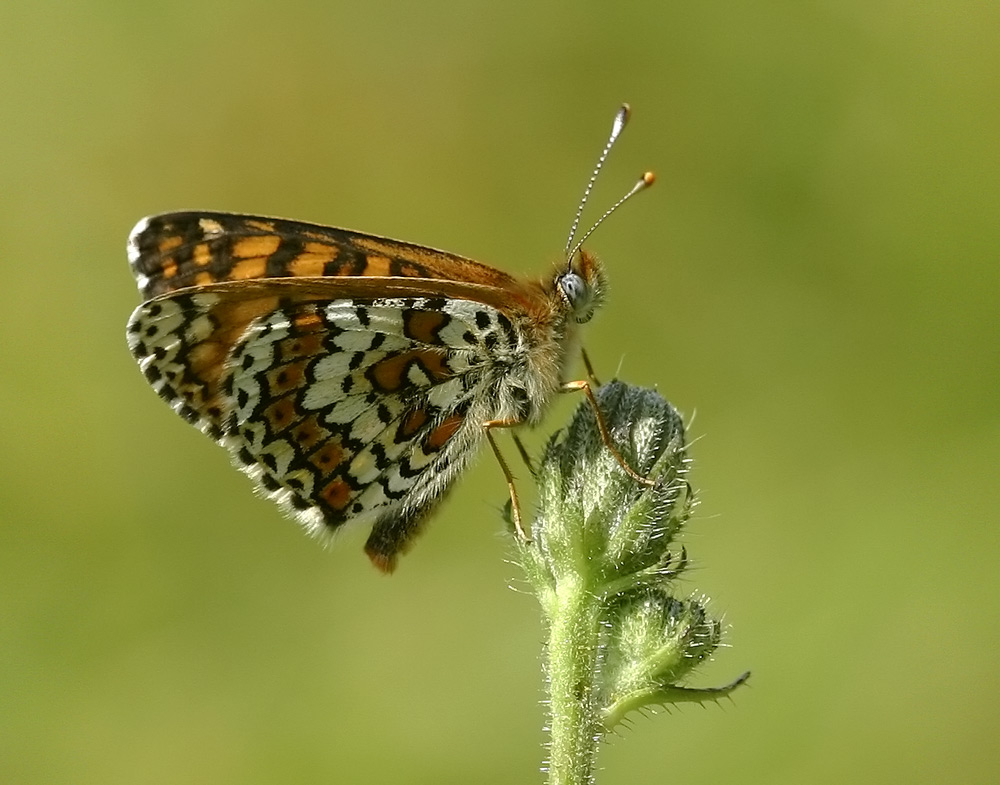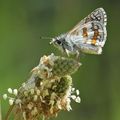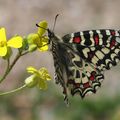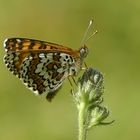Melitaea cinxia - Glanville fritillary
Melitaea cinxia - Glanville fritillary - Veldparelmoervlinder - Wegerich-Scheckenfalter - La Mélitée du Plantain.
The Glanville Fritillary (Melitaea cinxia) is a medium sized orange, black and white "checkerspot" butterfly inhabiting open meadows. The males patrol along roads and habitat edges, on the lookout for the less conspicuous females which remain in dense tussocks for long periods. Mating occurs around mid-day, and as the female often continues to fly from flower to flower, mating pairs are conspicuous.
Throughout most of their range they have one generation per year, overwintering as larvae. In warm regions they have two generations per year. In her lifetime, a female lays several clusters of up to 200 eggs on the underside of the larval food plant. She feeds on nectar (with her proboscis) from surrounding flowering plants. The larvae feed on several species of plants in the genera Plantago and Veronica. They live in gregarious family groups in characteristic silken webs ("nests") throughout most of their larval stage. When alarmed, a feeding group of Glanville Fritillary larvae will jerk their heads in unison, probably to distract their enemies.
Through the winter (or summer where it is very dry), the caterpillars stop feeding and lie dormant until spring (or fall, where the summer is dry) when they resume eating, and eventually pupate. The inconspicuous pupa hangs from a plant stem or lies in the leaf litter for 2 to 3 weeks, until the next generation of adults emerges, living for only up to three weeks.
Harm










adriano j faria 23/03/2008 22:20
very sharpness photo I like it......adriMAURICE CLEGG 23/03/2008 22:19
stunning macro image, wonderful detail of this amazing butterfly.great dof and superb colours.
regards, maurice.
Marko König 16/02/2008 18:33
Good capture - i like it.Regards,
Marko
Luc Grollie 16/02/2008 17:47
completely agree with Ceees !!!!!stunning !!!
greetz,
Ludvig S 16/02/2008 5:17
Very very nice macro! I like the fine details, the light and the composition very much.Cees Kuijs 15/02/2008 21:12
Now, this is a perfect macro !!!Pinsharp and stunning details. Chapeau !!
Greetings, Cees
j.a.j.jansen m. 15/02/2008 19:14
It's really a beauty, my compliments.Greetings, Jan.
Daren Borzynski 14/02/2008 21:43
I cant wait for spring after seeing this :)Lovely capture, the light & detail is superb.
Best Wishes
Daren